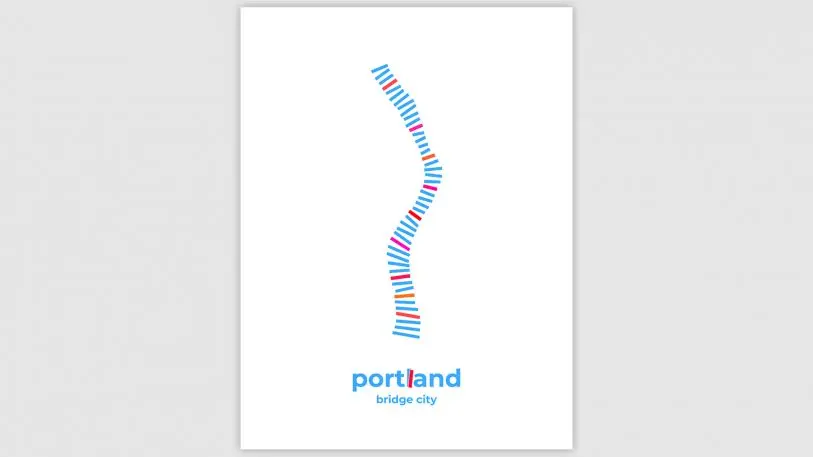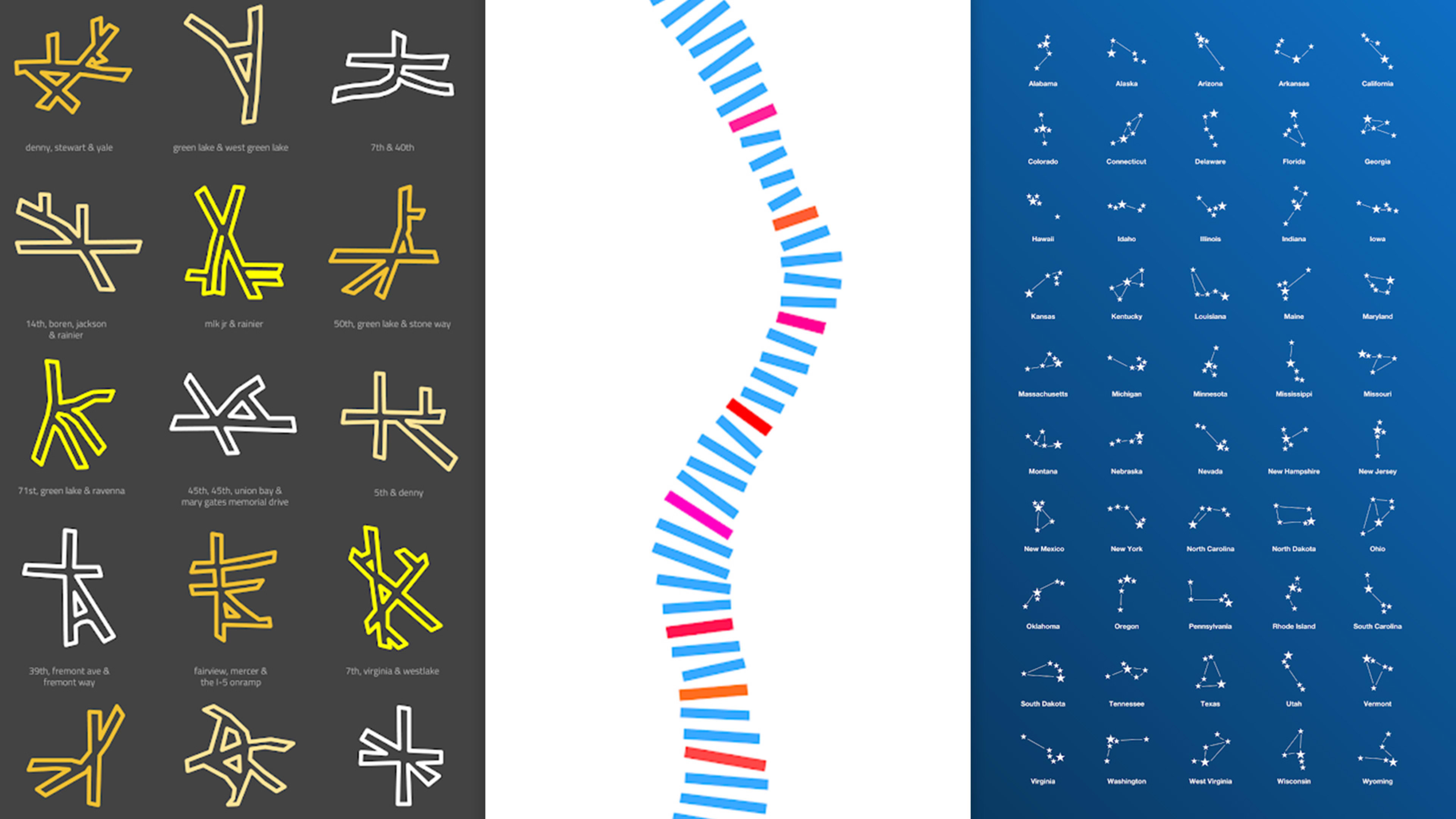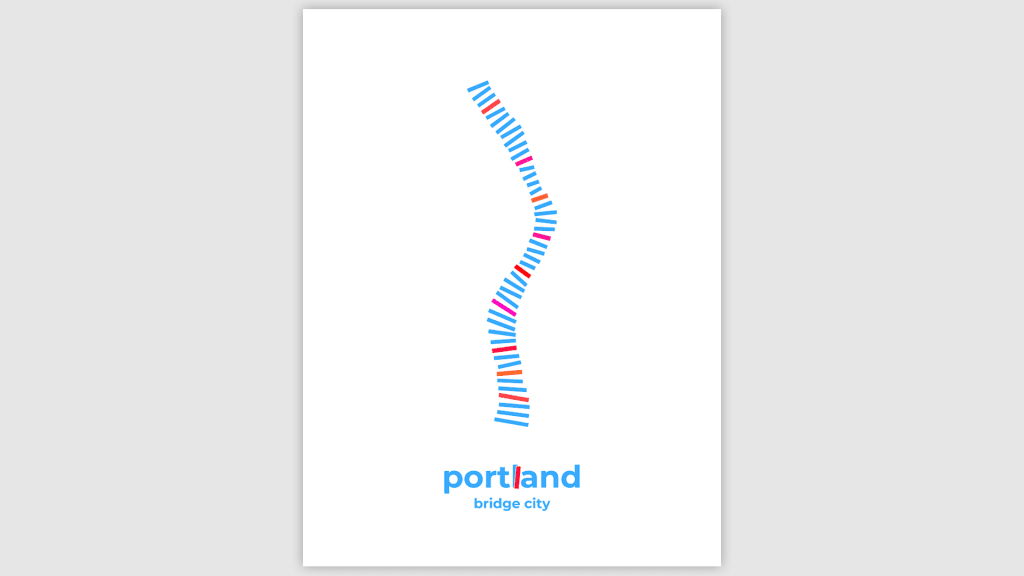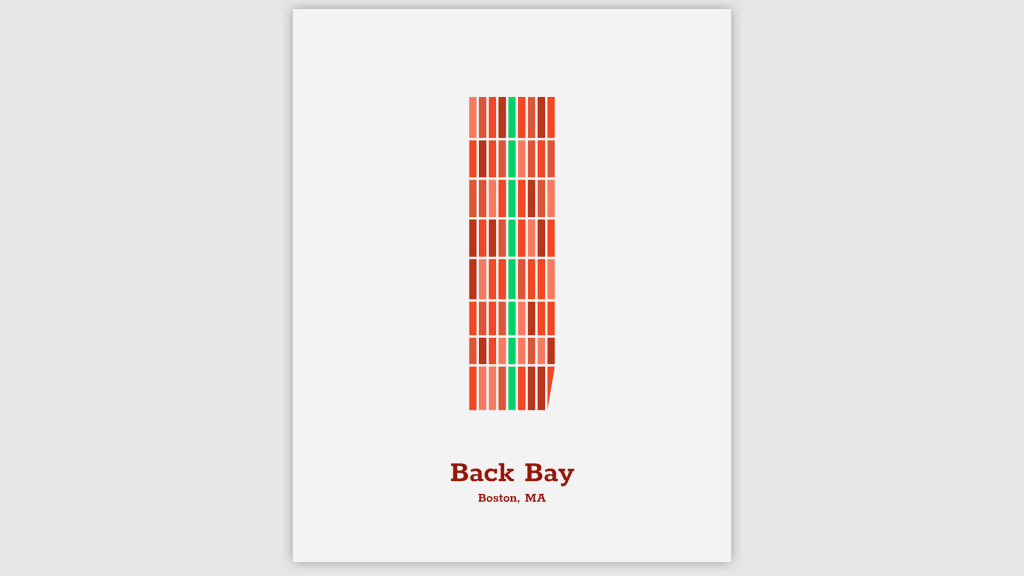To many of us, cities are concepts more than places. For instance, I live in Portland, Oregon–a city that, thanks in part to eight seasons of the TV show Portlandia, almost certainly triggers extremely specific thoughts in your head (hipsters! Antifa!) that have little to do with any actual defining details of the place. What’s compelling about Barely Maps–a side project-turned-full-time practice by designer Peter Gorman–is how it depicts a city’s defining details as concepts. It’s not hard to fill a map with obscure details that only a native would recognize. But I’ve lived here for six years, and even I had to squint for a second to decipher this minimalist composition:

Ah, of course–the nine downtown bridges, subtly interleaved with a stylized depiction of the Willamette River. And now, yup, there it is: a brief but discernible fizz of self-satisfaction. If I still used Instagram, that map–paired with an appropriately humblebraggy hashtag–would make a perfect post.
Of course, that feeling went away–to be replaced by something like perplexed curiosity mixed with pouty left-out-ness–as soon as I looked at some of Gorman’s other “barely maps.” If you’re from Boston, or Savannah, I guess these mean something to you…? Hmph.

To Gorman’s credit, he designed each map with the sincere appreciation for local detail that can only come from… visiting all of these places in person on an 11,000-mile yearlong bicycle circuit of the United States!? Yes, it’s true.
“In each map, I wanted to include the features of each place that stood out the most to me, or what made each place memorable or unique,” he tells Co.Design. “I definitely don’t want to make anything that would be incomprehensible. If anything, I hope the maps will ignite people’s curiosity about a place, or start a conversation.”
Because I am a professional, I put my pouty-face away and asked Gorman to please map-splain. Regarding the Boston image: “The Back Bay in Boston is a neighborhood with long blocks of brick brownstones. There’s one narrow green park in the middle. With the map for that neighborhood, I wanted to illustrate the long blocks, the bricks, and the park.” And about Savannah: “The old part of the city is arranged around this network of green spaces, rather than a regular grid of streets. The city founder (James Oglethorpe) actually developed this concept before ever setting foot in America, and as far as I know, Savannah is the only place where it’s been implemented.”
Okay, he was right: curiosity, ignited!
It’s this kind of earnest, unabashedly nerdy content–part Easter egg, part visual Wikipedia entry–that makes Barely Maps transcend the superficiality of many “minimalist” interpretations of otherwise-recognizable things. It has also helped propel Barely Maps beyond “side hobby” status: After this image led to an article in the Seattle Times, Gorman “decided to take the leap and turn the maps into a full-time thing.” He’s collecting them into a book scheduled for publication in 2019. And if, in the meantime, I get to feel a little smug while admiring another of Gorman’s takes on my hometown–why yes, I do recognize that bit of unlabeled city grid! #pdxrules #powellsbooks4eva–well, what’s the harm in that?
Recognize your brand’s excellence by applying to this year’s Brands That Matter Awards before the early-rate deadline, May 3.






